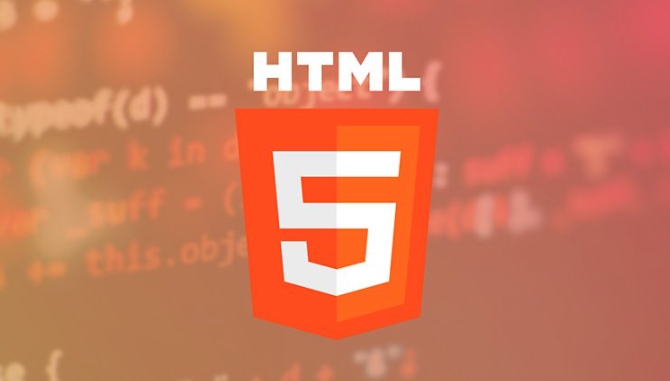Persisting session-specific data using HTML5 sessionStorage.
Jul 02, 2025 pm 03:46 PMsessionStorage is a client storage mechanism provided by HTML5. The data is only valid during the current session and will be cleared after closing the page or browser. It is suitable for temporary needs, such as multi-step form data storage, page status recording, etc. Operation methods include setting, reading, deleting and clearing data, but only string types can be stored, and objects or arrays need to be converted with JSON.stringify(). When using it, you should pay attention to cross-domain sharing, capacity limitation, low security, and inability to share across tabs. It is suitable for front-end interactive scenarios that save resources and improve user experience.

In web development, sessionStorage is a very practical tool if you need to temporarily save data during user sessions. It allows you to store key-value pair data in the user's browser, which is only valid during the current session and will be cleared after closing the page or browser. Compared to localStorage , it has a shorter life cycle, but is more suitable for temporary needs.

What is sessionStorage?
sessionStorage is a client storage mechanism provided by HTML5, similar to localStorage , but it has a key difference: data is only preserved in the current session . Once the user closes the browser tab or window, the data will be cleared. This makes it very suitable for saving some information that does not require long-term retention, such as form input, page status, etc.

The usage method is also relatively simple, and the basic operations include setting, reading, and deleting data:
-
sessionStorage.setItem('key', 'value') -
sessionStorage.getItem('key') -
sessionStorage.removeItem('key') -
sessionStorage.clear()
It should be noted that the data in sessionStorage can only store string types. If you want to store objects or arrays, you need to convert them with JSON.stringify() before storing them.

Which scenarios are suitable for sessionStorage?
In many actual developments, we do not want to put all temporary data in memory or send it to the server. At this time, sessionStorage is very suitable.
for example:
- When filling in a multi-step form, the data of the intermediate step can be temporarily present in
sessionStorageto avoid loss of refresh pages. - When switching pages, the user selects the status, such as selected tabs, sorting methods, etc.
- Some operation records before the user logs in, such as products that have been added to the shopping cart but have not been logged in (of course, formal orders still have to rely on the server).
In this scenario, using sessionStorage not only saves resources but also improves user experience than frequently requesting servers.
What are the precautions when using it?
Although sessionStorage is simple and easy to use, there are some details that are easy to ignore:
- Cross-domain data is not shared : even if the two pages are the same but the ports are different, the data cannot be accessed from each other.
- Capacity limit : Most browsers support a size of about 5MB, and if it exceeds it, an error will be reported.
- Not very secure : Do not use it to store sensitive information, because data can be read by front-end scripts.
- Cannot share across tabs : Unlike
localStorage, each tab has its own independent storage space.
In addition, if your application relies on sessionStorage to determine user status, remember to handle the data that does not exist to avoid errors.
Let's summarize
sessionStorage is a lightweight, limited life cycle local storage solution, especially suitable for temporary storage of session data. As long as you pay attention to the usage boundaries and limitations, you can serve the front-end interaction needs well. Basically all is it, not complicated but it is easy to ignore details.
The above is the detailed content of Persisting session-specific data using HTML5 sessionStorage.. For more information, please follow other related articles on the PHP Chinese website!

Hot AI Tools

Undress AI Tool
Undress images for free

Undresser.AI Undress
AI-powered app for creating realistic nude photos

AI Clothes Remover
Online AI tool for removing clothes from photos.

Clothoff.io
AI clothes remover

Video Face Swap
Swap faces in any video effortlessly with our completely free AI face swap tool!

Hot Article

Hot Tools

Notepad++7.3.1
Easy-to-use and free code editor

SublimeText3 Chinese version
Chinese version, very easy to use

Zend Studio 13.0.1
Powerful PHP integrated development environment

Dreamweaver CS6
Visual web development tools

SublimeText3 Mac version
God-level code editing software (SublimeText3)
 Handling reconnections and errors with HTML5 Server-Sent Events.
Jul 03, 2025 am 02:28 AM
Handling reconnections and errors with HTML5 Server-Sent Events.
Jul 03, 2025 am 02:28 AM
When using HTML5SSE, the methods to deal with reconnection and errors include: 1. Understand the default reconnection mechanism. EventSource retrys 3 seconds after the connection is interrupted by default. You can customize the interval through the retry field; 2. Listen to the error event to deal with connection failure or parsing errors, distinguish error types and execute corresponding logic, such as network problems relying on automatic reconnection, server errors manually delay reconnection, and authentication failure refresh token; 3. Actively control the reconnection logic, such as manually closing and rebuilding the connection, setting the maximum number of retry times, combining navigator.onLine to judge network status to optimize the retry strategy. These measures can improve application stability and user experience.
 Integrating CSS and JavaScript effectively with HTML5 structure.
Jul 12, 2025 am 03:01 AM
Integrating CSS and JavaScript effectively with HTML5 structure.
Jul 12, 2025 am 03:01 AM
HTML5, CSS and JavaScript should be efficiently combined with semantic tags, reasonable loading order and decoupling design. 1. Use HTML5 semantic tags, such as improving structural clarity and maintainability, which is conducive to SEO and barrier-free access; 2. CSS should be placed in, use external files and split by module to avoid inline styles and delayed loading problems; 3. JavaScript is recommended to be introduced in front, and use defer or async to load asynchronously to avoid blocking rendering; 4. Reduce strong dependence between the three, drive behavior through data-* attributes and class name control status, and improve collaboration efficiency through unified naming specifications. These methods can effectively optimize page performance and collaborate with teams.
 Receiving real-time data with HTML5 Server-Sent Events (SSE).
Jul 02, 2025 pm 04:46 PM
Receiving real-time data with HTML5 Server-Sent Events (SSE).
Jul 02, 2025 pm 04:46 PM
Server-SentEvents (SSE) is a lightweight solution provided by HTML5 to push real-time updates to the browser. It realizes one-way communication through long HTTP connections, which is suitable for stock market, notifications and other scenarios. Create EventSource instance and listen for messages when using: consteventSource=newEventSource('/stream'); eventSource.onmessage=function(event){console.log('Received message:',event.data);}; The server needs to set Content-Type to text/event
 Declaring the correct HTML5 doctype for modern pages.
Jul 03, 2025 am 02:35 AM
Declaring the correct HTML5 doctype for modern pages.
Jul 03, 2025 am 02:35 AM
Doctype is a statement that tells the browser which HTML standard to use to parse the page. Modern web pages only need to be written at the beginning of the HTML file. Its function is to ensure that the browser renders the page in standard mode rather than weird mode, and must be located on the first line, with no spaces or comments in front of it; there is only one correct way to write it, and it is not recommended to use old versions or other variants; other such as charset, viewport, etc. should be placed in part.
 Improving SEO with HTML5 semantic markup and Microdata.
Jul 03, 2025 am 01:16 AM
Improving SEO with HTML5 semantic markup and Microdata.
Jul 03, 2025 am 01:16 AM
Using HTML5 semantic tags and Microdata can improve SEO because it helps search engines better understand page structure and content meaning. 1. Use HTML5 semantic tags such as,,,, and to clarify the function of page blocks, which helps search engines establish a more accurate page model; 2. Add Microdata structured data to mark specific content, such as article author, release date, product price, etc., so that search engines can identify information types and use them for display of rich media summary; 3. Pay attention to the correct use of tags to avoid confusion, avoid duplicate tags, test the effectiveness of structured data, regularly update to adapt to changes in schema.org, and combine with other SEO means to optimize for long-term.
 What are the best practices for structuring an HTML5 document?
Jun 26, 2025 am 01:03 AM
What are the best practices for structuring an HTML5 document?
Jun 26, 2025 am 01:03 AM
To build standardized and clear HTML5 documents, the following best practices must be followed: 1. Use standard document type declarations; 2. Build a basic skeleton including three tags and pay attention to the character set, title and script location; 3. Use semantic tags such as , , to improve accessibility and SEO; 4. Reasonably nest the title levels to ensure that the structure is clear and there is only one per page. These steps help improve code quality, collaboration efficiency and user experience.
 Explaining the HTML5 `` vs `` elements.
Jul 12, 2025 am 03:09 AM
Explaining the HTML5 `` vs `` elements.
Jul 12, 2025 am 03:09 AM
It is a block-level element, suitable for layout; it is an inline element, suitable for wrapping text content. 1. Exclusively occupy a line, width, height and margins can be set, which are often used in structural layout; 2. No line breaks, the size is determined by the content, and is suitable for local text styles or dynamic operations; 3. When choosing, it should be judged based on whether the content needs independent space; 4. It cannot be nested and is not suitable for layout; 5. Priority is given to the use of semantic labels to improve structural clarity and accessibility.
 Getting the user's current location with the HTML5 Geolocation API.
Jul 02, 2025 pm 05:03 PM
Getting the user's current location with the HTML5 Geolocation API.
Jul 02, 2025 pm 05:03 PM
When using HTML5Geolocation API to obtain user location, you must first obtain user authorization, and request and explain the purpose at the right time; the basic method is navigator.geolocation.getCurrentPosition(), which contains successful callbacks, wrong callbacks and configuration parameters; common reasons for failure include permission denied, browser not supported, network problems, etc., alternative solutions and clear prompts should be provided. The specific suggestions are as follows: 1. Request permissions when the user operation is triggered, such as clicking the button; 2. Use enableHighAccuracy, timeout, maximumAge and other parameters to optimize the positioning effect; 3. Error handling should distinguish between different errors






